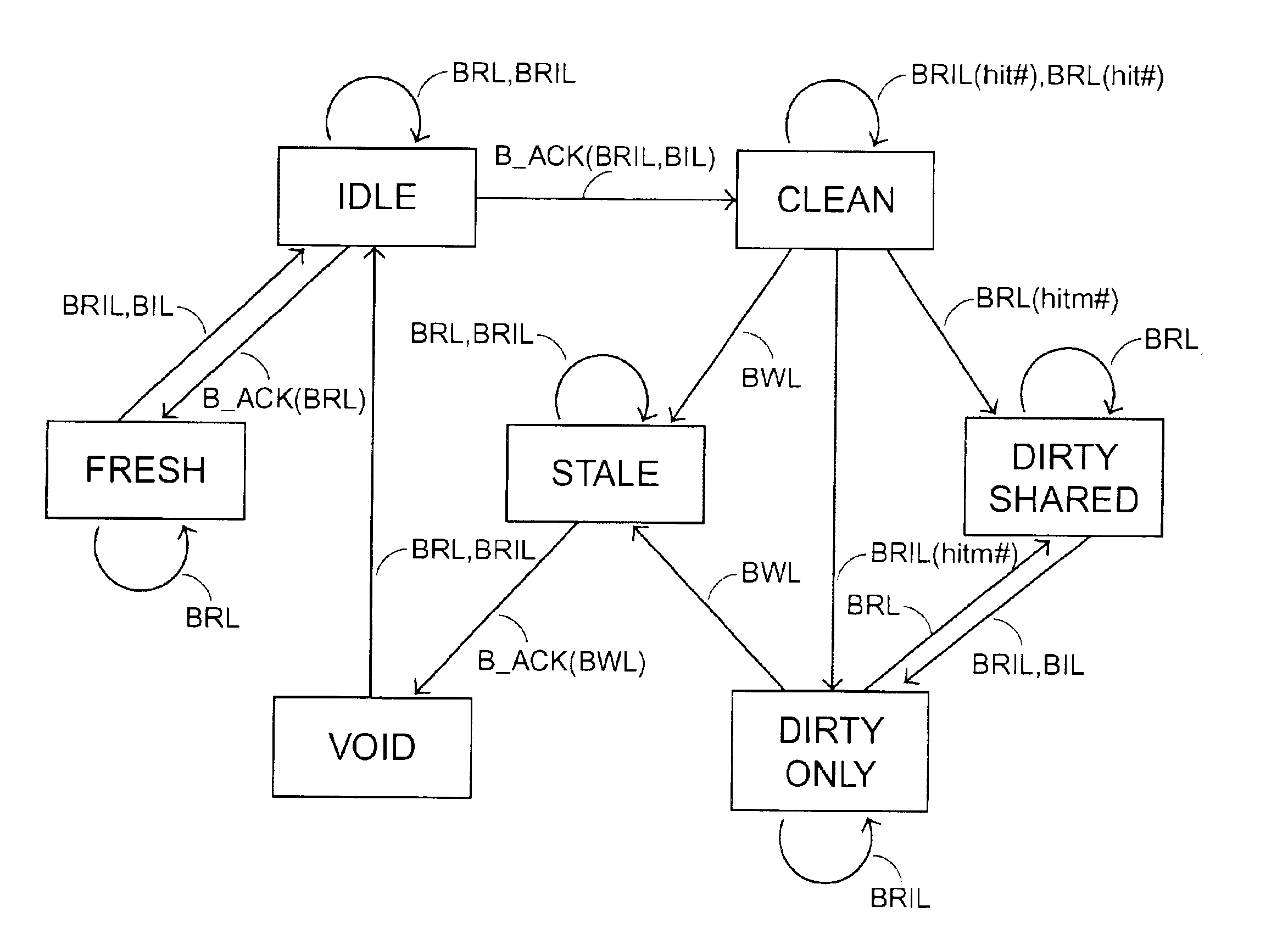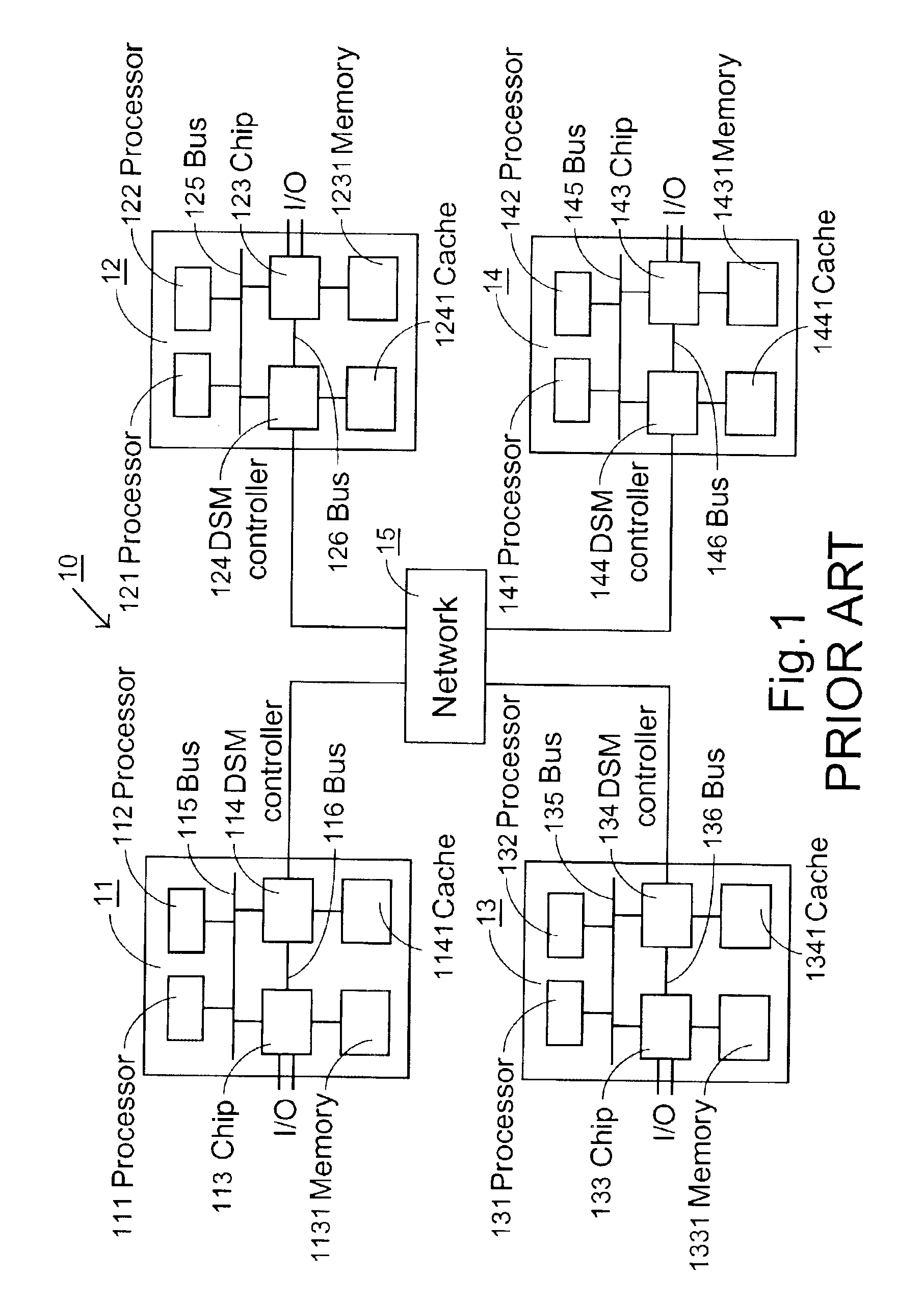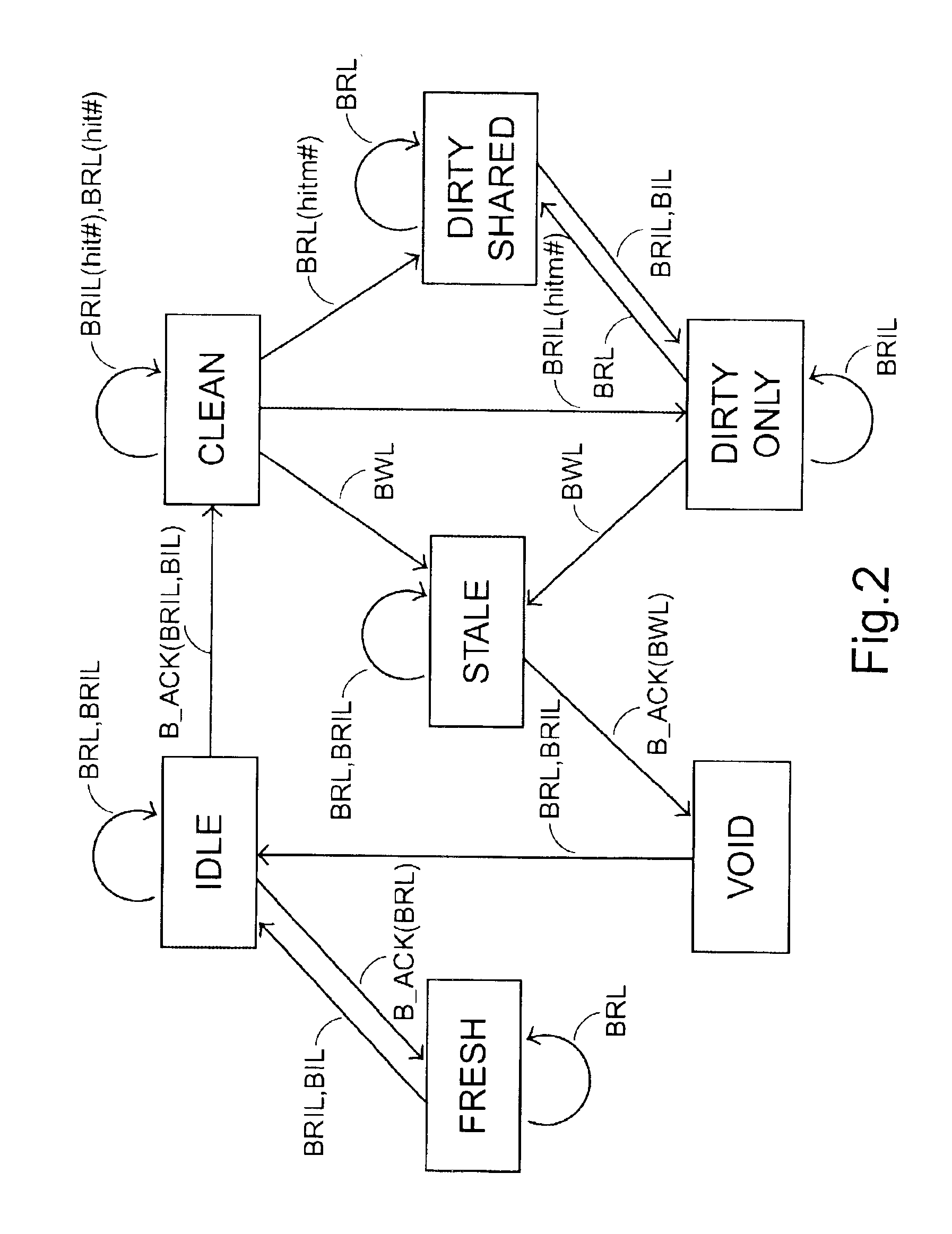Data-maintenance method of distributed shared memory system
- Summary
- Abstract
- Description
- Claims
- Application Information
AI Technical Summary
Benefits of technology
Problems solved by technology
Method used
Image
Examples
Embodiment Construction
[0042]The present invention will now be described more specifically with reference to the following embodiments. It is noted that the following descriptions of preferred embodiments of this invention are presented herein for purpose of illustration and description only; it is not intended to be exhaustive or to be limited to the precise form disclosed.
[0043]The DSM system as shown in FIG. 1 is used for illustrating an embodiment of the present invention. The states of the cache line indicated by a cache coherency directory, however, are modified to solve the problems encountered by the prior art.
[0044]In order to demonstrate the data transmission of the present DSM system. The cache-state transition is illustrated with reference to FIGS. 2 and 3 in response to a local access command and a remote access command, respectively.
[0045]According to the present invention, there are seven possible states for each of the L3 cache lines indicated by the cache coherency directory, which includ...
PUM
 Login to View More
Login to View More Abstract
Description
Claims
Application Information
 Login to View More
Login to View More - R&D
- Intellectual Property
- Life Sciences
- Materials
- Tech Scout
- Unparalleled Data Quality
- Higher Quality Content
- 60% Fewer Hallucinations
Browse by: Latest US Patents, China's latest patents, Technical Efficacy Thesaurus, Application Domain, Technology Topic, Popular Technical Reports.
© 2025 PatSnap. All rights reserved.Legal|Privacy policy|Modern Slavery Act Transparency Statement|Sitemap|About US| Contact US: help@patsnap.com



